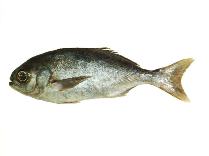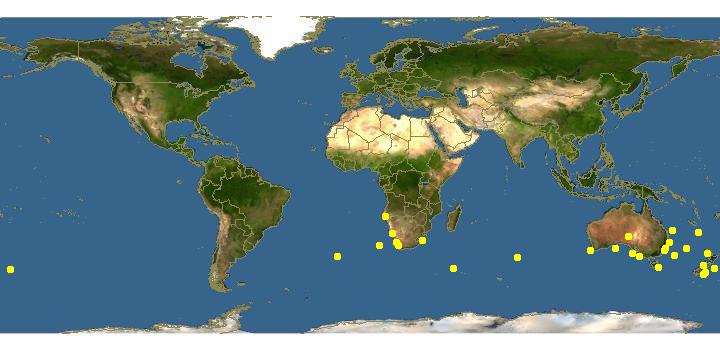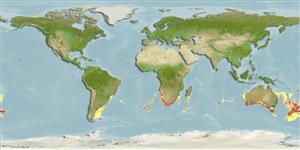http://www.fishbase.org/Summary/speciesSummary.php?genusname=Hyperoglyphe&speciesname=antarctica ---> http://fishbase.de/Summary/speciesSummary.php?genusname=Hyperoglyphe&speciesname=antarctica
http://fishbase.de/Summary/speciesSummary.php?genusname=Hyperoglyphe&speciesname=antarctica ---> https://fishbase.de/Summary/speciesSummary.php?genusname=Hyperoglyphe&speciesname=antarctica
https://fishbase.de/Summary/speciesSummary.php?genusname=Hyperoglyphe&speciesname=antarctica ---> http://fishbase.de/summary/Hyperoglyphe-antarctica.html
http://fishbase.de/summary/Hyperoglyphe-antarctica.html ---> https://fishbase.de/summary/Hyperoglyphe-antarctica.html
Hyperoglyphe antarctica, Bluenose warehou : fisheries

You can
sponsor
this page
Common name (e.g. trout)
Genus + Species (e.g. Gadus morhua)
-

-
About this page
-
Languages
-
User feedbacks
-
Citation
-
Uploads
-
Related species
-


 Bluenose warehou
Add your observation in
Fish Watcher
Upload your
photos
and
videos
Bluenose warehou
Add your observation in
Fish Watcher
Upload your
photos
and
videos
Pictures
|
Google image
 Hyperoglyphe antarctica
Hyperoglyphe antarctica
Picture by
SeaFIC
Teleostei (teleosts) >
Scombriformes
(Mackerels) >
Centrolophidae
(Medusafishes)
Etymology:
Hyperoglyphe:
Greek, hyper = over + Greek, glyphis = carved (Ref.
45335
)
.
Environment: milieu / climate zone / depth range / distribution range
Ecology
Marine; benthopelagic; depth range 40 - 1500 m (Ref.
52180
), usually 260 - 490 m (Ref.
52180
). Deep-water; 19°S - 55°S, 67°W - 173°W
Southwest Atlantic: Argentina. Southeast Atlantic and Western Indian Ocean: South Africa. Southwest Pacific: New Zealand and Australia (including Western Australia).
Length at first maturity / Size / Weight / Age
Maturity: L
m
70.6
, range 59 - ? cm
Max length : 140 cm TL male/unsexed; (Ref.
9563
); common length : 60.0 cm TL male/unsexed; (Ref.
52180
); max. published weight: 63.0 kg (Ref.
54802
); max. reported age: 15 years (Ref.
9072
)
Dorsal
spines
(total): 7 - 8;
Dorsal
soft rays
(total): 19-21;
Anal
spines
: 3;
Anal
soft rays
: 15 - 17. Uniformly dark to black.
Most common over or near rocky areas at 100-300 m (Ref.
9258
). Generally, blue eye remain close to the sea bed during the day and move up in the water column at night, following concentrations of food (Ref.
6390
). The fish are found over rough ground and at the edges of canyons and steep drop-offs. Blue eye appear to prefer cold water as part of their general behavior (Ref.
6390
). Juveniles inhabit surface waters, sometimes in association with floating debris (Ref.
6390
). Feed primarily on the pelagic tunicate
Pyrosoma atlantica
which is found near the sea bed during the day but dispersed throughout the water column at night (Ref.
7129
,
30454
). They also feed on squid, mollusks and crustaceans (Ref.
30455
,
30454
) and fish ranging from small lanternfish (Myctophidae) to large fish such as gemfish (
Rexea solandri
). Juveniles consume small planktonic and sedentary organisms (Ref.
30456
). Marketed fresh and frozen; exported to Japan for sashimi; eaten steamed, fried, broiled and baked (Ref.
9988
).
In Australia, spawning appears to be correlated with water temperature and nutrient upwellings (Ref.
7129
). It appears that mature fish move up the continental slope into shallow depths (320-400 m) and aggregate in specific grounds for spawning (Ref.
6390
). There is no information on the number of eggs blue eye produce nor on the egg and larval stages of their life history (Ref.
6390
).
Haedrich, R.L.
, 1986. Stromateidae. p. 842-846. In M.M. Smith and P.C. Heemstra (eds.) Smiths' sea fishes. Springer-Verlag, Berlin. (Ref.
4410
)
IUCN Red List Status (Ref.
130435
)
Not Evaluated
CITES
Not Evaluated
Not Evaluated
Threat to humans
Harmless
Human uses
Fisheries: commercial
FAO - Fisheries:
landings
; Publication:
search
| FIRMS -
Stock assessments
|
FishSource
|
Sea Around Us
More information
Countries
FAO areas
Ecosystems
Occurrences
Introductions
Stocks
Ecology
Diet
Food items
Food consumption
Ration
Common names
Synonyms
Metabolism
Predators
Ecotoxicology
Reproduction
Maturity
Spawning
Spawning aggregation
Fecundity
Eggs
Egg development
Age/Size
Growth
Length-weight
Length-length
Length-frequencies
Morphometrics
Morphology
Larvae
Larval dynamics
Recruitment
Abundance
BRUVS
References
Aquaculture
Aquaculture profile
Strains
Genetics
Electrophoreses
Heritability
Diseases
Processing
Nutrients
Mass conversion
Collaborators
Pictures
Stamps, Coins Misc.
Sounds
Ciguatera
Speed
Swim. type
Gill area
Otoliths
Brains
Vision
Tools
E-book
|
Field guide
|
Length-frequency wizard
|
Life-history tool
|
Point map
|
Classification Tree
|
Catch-MSY
|
Special reports
Check for Aquarium maintenance
|
Check for Species Fact Sheets
|
Check for Aquaculture Fact Sheets
Download XML
Summary page
|
Point data
|
Common names
|
Photos
Internet sources
AFORO (otoliths) |
Aquatic Commons
|
BHL
|
Cloffa
|
BOLDSystems
|
Websites from users
|
Check FishWatcher
|
CISTI
|
Catalog of Fishes
:
genus
,
species
|
DiscoverLife
|
ECOTOX
| FAO - Fisheries:
landings
; Publication:
search
|
Faunafri
| Fishipedia |
Fishtrace
| GenBank:
genome
,
nucleotide
|
GloBI
|
Google Books
|
Google Scholar
|
Google
| IGFA World Record |
MitoFish
|
Otolith Atlas of Taiwan Fishes
|
PubMed
| Reef Life Survey | Socotra Atlas |
Tree of Life
| Wikipedia:
Go
,
Search
| World Records Freshwater Fishing |
Zoological Record
Estimates based on models
Preferred temperature (Ref.
123201
): 4.1 - 16.4, mean 7.5 °C (based on 485 cells).
Phylogenetic diversity index (Ref.
82804
): PD
50
= 0.5156 [Uniqueness, from 0.5 = low to 2.0 = high].
Bayesian length-weight: a=0.00891 (0.00498 - 0.01595), b=3.10 (2.94 - 3.26), in cm total length, based on LWR estimates for this species & (Sub)family-body (Ref.
93245
).
Trophic level (Ref.
69278
): 4.0 ±0.57 se; based on food items.
Resilience (Ref.
120179
): Medium, minimum population doubling time 1.4 - 4.4 years (K=0.03-0.3; tm=5-7; tmax=15).
Prior r = 0.57, 95% CL = 0.38 - 0.86, Based on 3 stock assessments.
Fishing Vulnerability (Ref.
59153
): Moderate to high vulnerability (51 of 100).
Climate Vulnerability (Ref.
125649
): Moderate to high vulnerability (52 of 100).
Price category (Ref.
80766
):
Low
.
Nutrients (Ref.
124155
): Calcium = 10.4 [6.4, 22.4] mg/100g; Iron = 0.339 [0.162, 0.644] mg/100g; Protein = 18.3 [15.8, 20.3] %; Omega3 = 0.374 [0.208, 0.689] g/100g; Selenium = 30.4 [12.7, 67.0] μg/100g; VitaminA = 10.3 [2.3, 43.0] μg/100g; Zinc = 0.259 [0.181, 0.392] mg/100g (wet weight); based on
nutrient studies.
Back to Search
Random Species
Back to Top
Accessed through:
Not available
FishBase mirror site :
localhost
Page last modified by :
mrius-barile
- 20 July 2016
Fatal error
: Uncaught ArgumentCountError: Too few arguments to function checkEcotox(), 1 passed in /var/www/html/summary/SpeciesSummary.php on line 2304 and exactly 3 expected in /var/www/html/includes/speciessummary.lib.php:2580 Stack trace: #0 /var/www/html/summary/SpeciesSummary.php(2304): checkEcotox() #1 {main} thrown in
/var/www/html/includes/speciessummary.lib.php
on line
2580
|






